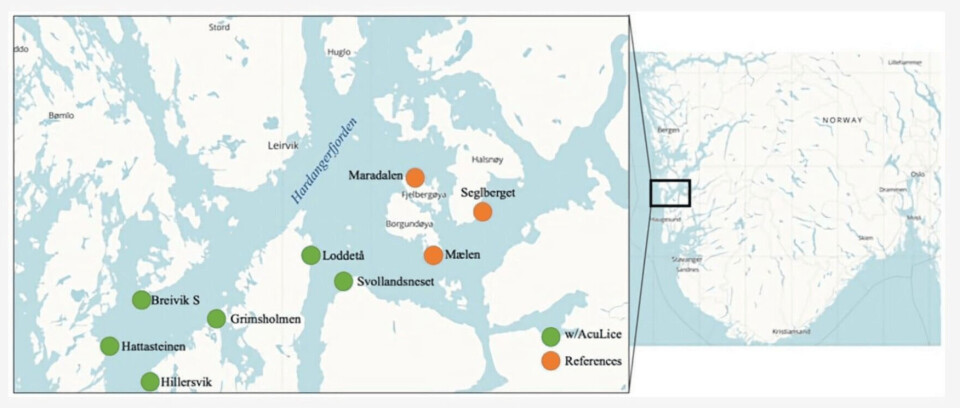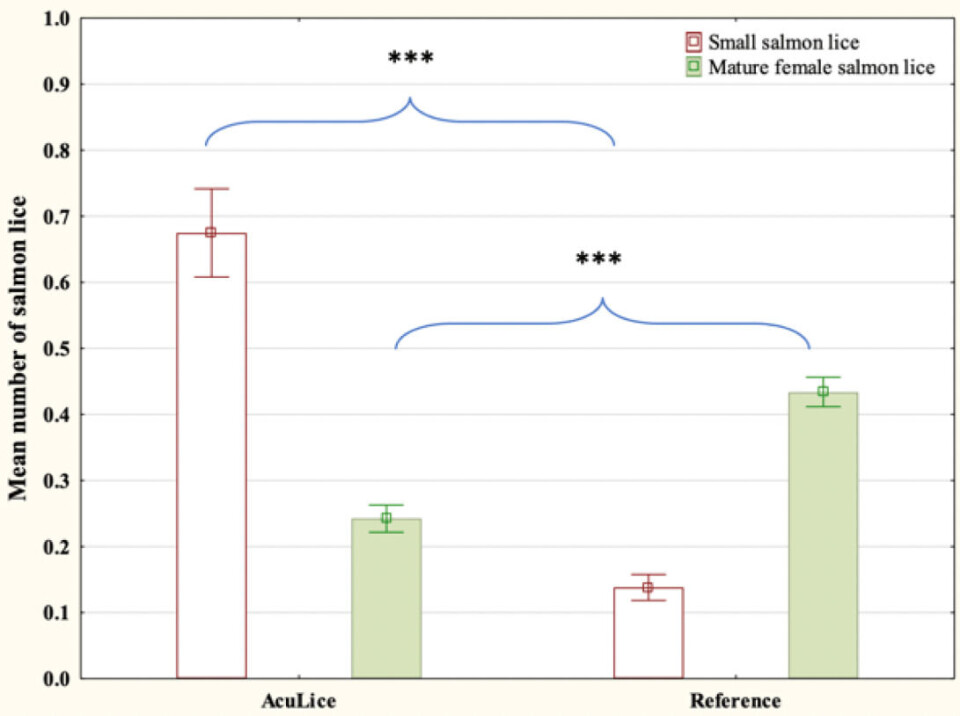
Acoustic lice killer cut parasite loads, study showed
A low-frequency constant sound generator, called AcuLice, almost halved the loads of adult female lice found on fish in a 43-week study at nine salmon farms in Norway.
AcuLice is an innovative method of preventing the spread of salmon lice by reproducing a sound that can affect the central nervous system in all stages of the parasite.
The device is usually located in the middle of the farm at a depth of 10 to 20 metres, although siting also into account the local acoustic environment to minimise interference.
Stress indicators
To ascertain whether the device could cause problems with animal welfare and that it is a viable alternative to combat lice (Lepeophtheirus salmonis), experts from the University of Bergen, Norway, and Akvaplan-niva’s Iceland office carried out an experimental field study divided into two stages.
The first stage evaluated the effects of the system on Atlantic salmon in sea pens through primary, secondary and tertiary indicators of stress, which could indicate any detriment to the welfare of the fish.

The second stage aimed to estimate the effectiveness of the AcuLice system on parasitic loads. This stage involved nine farms located in the Hardangerfjord which were monitored for 43 weeks. Six of the farms used AcuLice and three didn’t.
Treatments
In addition to counting lice weekly, the number of mechanical delousing treatments carried out and the number of weeks between stocking in the sea and the first treatment were also recorded.
Other than a slight increase in fish plasma glucose, no significant differences were observed in measured primary, secondary, or tertiary stress responses.
“The group of Atlantic salmon treated with low-frequency sound (AcuLice) for one hour in commercial open-ocean cages showed less or no acute stress responses compared to the control group,” the researchers noted.

More small lice
For L. salmonis, a higher number of smaller lice were observed in the AcuLice-treated groups compared to the control groups during the experimental period. However, the scientists found a lower count of adult females in the group treated with the acoustic system (0.24 ± 0.03) compared to the control group (0.44 ± 0.04).
The groups treated with AcuLice had a significantly lower number (3.1 ± 0.6) of salmon lice treatments during the study period, compared to the reference group (6.3 ± 0.5 ).
Tthe researchers concluded that “the AcuLice treatment had a significant effect on the reduction in the salmon lice burden during Atlantic salmon commercial production”.
Read the full study titled “Acoustic Delicing of Atlantic Salmon (Salmo salar): Fish Welfare and Salmon Lice (Lepeophtheirus salmonis) Dynamics”, published in the journal Marine Science and Engineering, here.























































